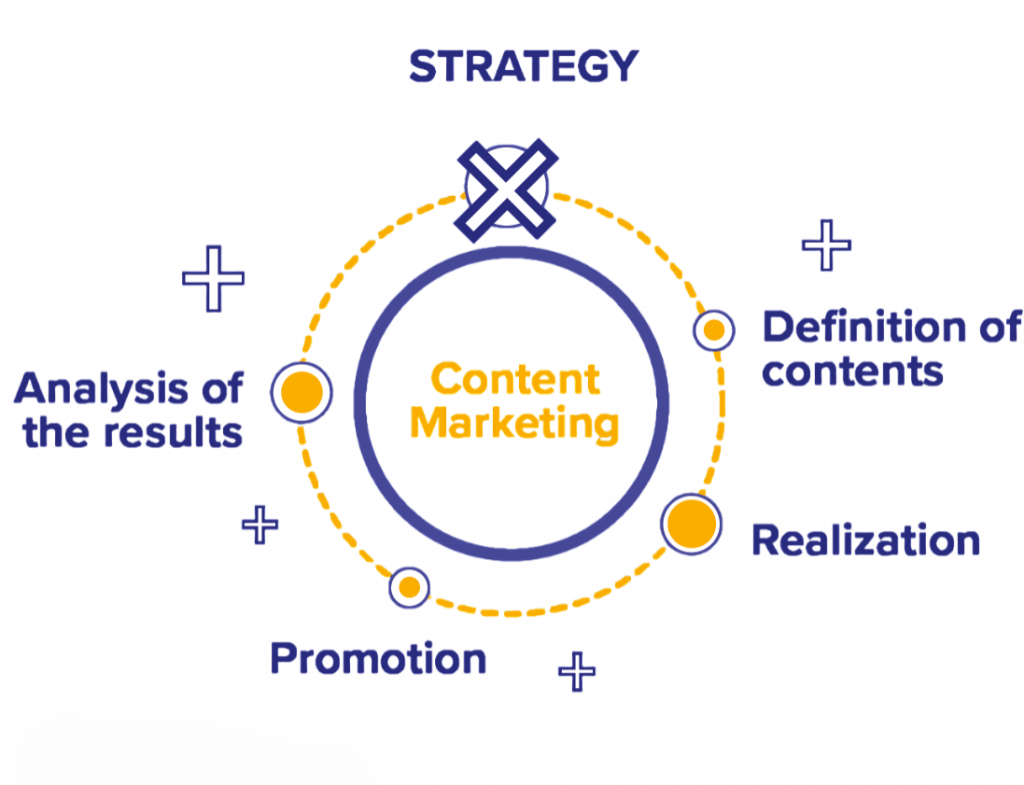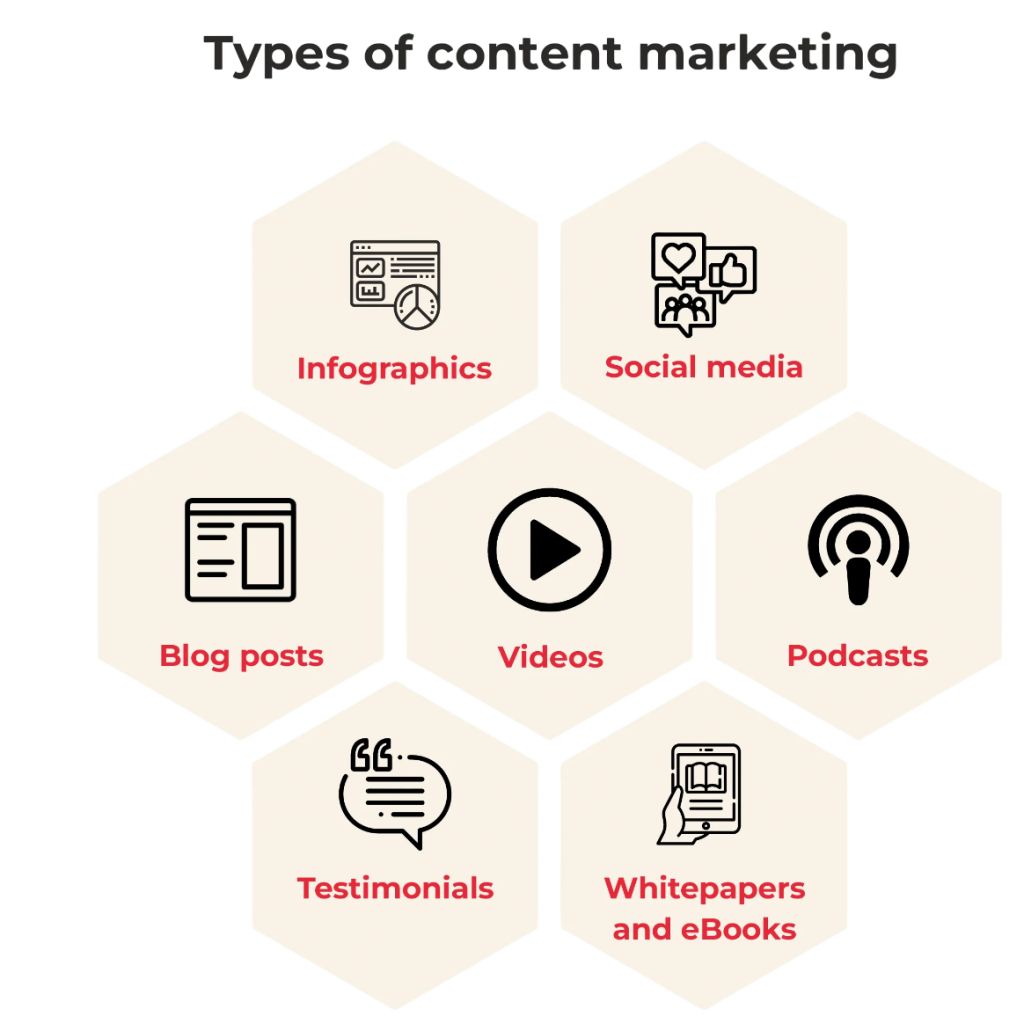
- What is Content Marketing?
- Importance of a Content Marketing Strategy
- Setting Clear Content Goals
- Understanding Your Audience
- Creating a Content Calendar
- Types of Content to Produce
- Content Distribution Channels
- Measuring Content Performance
- Content Optimization Tips
- Tools for Content Marketing
- Common Mistakes to Avoid
- Future Trends in Content Marketing
What is Content Marketing?
Content marketing is a strategic approach focused on creating and distributing valuable, relevant, and consistent content to attract and retain a clearly defined audience and ultimately, to drive profitable customer action. Unlike traditional marketing, which often interrupts audiences with promotional messaging, content marketing aims to deliver information that solves problems, educates, entertains, or engages users meaningfully a value-driven approach emphasized in Digital Marketing Training, where learners master the art of creating audience-first content, building trust through relevance, and driving engagement across blogs, videos, email, and social platforms without relying on disruptive tactics. Whether it’s through blog posts, videos, infographics, podcasts, or social media, content marketing builds trust and authority, encouraging long-term customer relationships.
Ready to Get Certified in Digital Marketing? Explore the Program Now Digital Marketing Online Training Offered By ACTE Right Now!
Importance of a Content Marketing Strategy
A documented content marketing strategy acts as a blueprint for achieving your marketing objectives. Without a clear plan, content efforts can become scattered and ineffective. An effective strategy aligns your content initiatives with overall business goals such as lead generation, brand awareness, customer retention, or driving sales. It ensures consistency in tone, voice, and messaging while optimizing the allocation of resources a strategic imperative explored in Big Brands Transforming Experience, where companies integrate brand identity, communication strategy, and customer touchpoints to create unified experiences that build trust, reduce fragmentation, and maximize marketing efficiency across channels. Moreover, a strategic approach allows marketers to measure success using key performance indicators (KPIs), analyze audience engagement, and make data-driven decisions to improve future campaigns.
Setting Clear Content Goals
- Setting SMART content goals Specific, Measurable, Achievable, Relevant, and Time-bound is crucial for content marketing success. These goals provide direction and benchmarks for evaluating performance. For instance, a goal might be to increase blog traffic by 30% in three months or to generate 200 qualified leads through gated content by the end of the quarter.
- Goals should align with broader marketing objectives and be prioritized based on business needs. They can vary across the buyer journey, such as creating awareness through SEO blogs, nurturing leads through email newsletters, or converting prospects via detailed case studies or product demos.
- One of the foundational elements of content marketing is understanding your target audience. Creating buyer personas fictional representations of your ideal customers helps you tailor content that resonates with them. These personas should include demographic details (age, gender, location), psychographic traits (interests, values, pain points), and behavioral insights (purchase habits, content consumption patterns).
- Conducting audience research through surveys, social listening, website analytics, and customer interviews allows marketers to uncover what content formats and topics will be most relevant and engaging. The deeper the understanding, the more personalized and impactful the content.
- Blog Posts: Great for SEO, thought leadership, and brand storytelling.
- Videos: Highly engaging, ideal for product demos, testimonials, and tutorials.
- Infographics: Visually appealing for data-driven content and quick insights.
- Ebooks & Whitepapers: Long-form content suited for lead generation.
- Webinars & Podcasts: Interactive formats to engage users in real-time or on-demand.
- Case Studies: Highlight real-world success stories and build credibility.
- Email Newsletters: Nurture subscribers and drive repeat traffic.
- Owned Media: Channels you control, such as your website, blog, email list, and social media profiles. These offer full control over content and branding.
- Earned Media: Includes PR mentions, backlinks, guest posts, and user-generated content. It builds authority and expands reach organically.
- Paid Media: Sponsored posts, social media ads, and content discovery platforms (e.g., Outbrain, Taboola). These can boost visibility quickly and target specific demographics.
- Content Planning: Trello, Airtable, CoSchedule
- SEO & Research: Ahrefs, SEMrush, Ubersuggest
- Writing & Editing: Grammarly, Hemingway Editor, Surfer SEO
- Graphic Design: Canva, Adobe Express
- Analytics & Tracking: Google Analytics, Hotjar, HubSpot
- Email Marketing: Mailchimp, ConvertKit
- Lack of Strategy: Posting without a plan leads to inconsistent and unfocused content.
- Ignoring Audience Needs: Content that doesn’t resonate with users fails to generate engagement.
- Overlooking SEO: Without optimization, great content may go unnoticed in search results.
- Neglecting Promotion: Failing to distribute or repurpose content limits its reach.
- Measuring the Wrong Metrics: Focusing only on vanity metrics (likes, views) may not reflect actual business impact.

To Explore Digital Marketing in Depth, Check Out Our Comprehensive Digital Marketing Online Training To Gain Insights From Our Experts!
Understanding Your Audience
Creating a Content Calendar
A content calendar is an essential tool for planning, organizing, and scheduling content across platforms. It provides a bird’s-eye view of what content is being published, when, and where a strategic advantage emphasized in Digital Marketing Training, where learners master the use of editorial calendars to coordinate publishing schedules, align messaging across platforms, and maintain consistency in content delivery for maximum audience impact. A well-structured calendar includes important dates (e.g., product launches, holidays), content types (blogs, videos, webinars), assigned authors, publishing deadlines, and content distribution channels. This proactive planning not only ensures consistency but also helps teams stay aligned and avoid content gaps or redundancies. Tools like Trello, Asana, or Google Sheets can be used to create and manage calendars effectively, while integrating editorial workflows for approvals and edits.
Looking to Digital Marketing Training? Discover the Digital Marketing Expert Masters Program Training Course Available at ACTE Now!
Types of Content to Produce
Content comes in many forms, and selecting the right types depends on your audience preferences and campaign goals. Common content types include:

Diversifying your content ensures broader reach and caters to different learning styles and buyer journey stages.
Content Distribution Channels
Creating great content is only half the battle; effective distribution is key to maximizing visibility and engagement. Content distribution channels fall into three categories: owned (e.g., websites, blogs, email lists), earned (e.g., shares, mentions, backlinks), and paid (e.g., sponsored posts, PPC ads) a strategic framework explored in How to Become a Digital Marketing Specialist, where learners master the art of content planning, channel selection, and performance tracking to ensure their message reaches the right audience through the most impactful mediums.
A multichannel distribution strategy, informed by audience behavior, ensures content reaches the right people at the right time. Repurposing content for different platforms also maximizes ROI.
Preparing for Digital Marketing Job Interviews? Have a Look at Our Blog on Digital Marketing Interview Questions and Answers To Ace Your Interview!
Measuring Content Performance
To evaluate the success of content marketing efforts, tracking key performance indicators (KPIs) is essential. By looking at various metrics, marketers can gain a clear view of content performance. Traffic metrics, such as page views and unique visitors, show how far the content reaches the audience key indicators emphasized in Local SEO Tips To Rule Google Maps, where marketers learn to monitor local visibility, analyze engagement signals, and interpret map pack performance to refine content strategies and attract high-intent traffic from nearby searchers. SEO indicators, like organic traffic and keyword rankings, reflect how well the content performs in search engines. Engagement metrics, including time on page, social shares, and comments, highlight the content’s ability to engage and connect with readers. Additionally, lead generation metrics, such as downloads and form submissions, show how well the content converts leads. Most importantly, sales impact metrics, like attributed revenue and customer acquisition cost, link content strategies to real business growth. Using analytics tools like Google Analytics, HubSpot, and SEMrush allows marketers to gather detailed insights. This helps them refine strategies and improve content for better results and higher returns on investment.
Content Optimization Tips
Content optimization is key for improving performance on digital platforms. It requires a focused strategy that includes several important elements. Using SEO best practices is essential. This means integrating targeted keywords, creating strong internal links, writing engaging meta descriptions, and designing attention-grabbing headlines. Ensuring mobile-friendliness is also critical. Content should load quickly and look good on all devices. Improving readability through clear subheadings, short paragraphs, and organized bullet points helps keep the audience engaged. Strong call-to-actions (CTAs) direct users to take desired actions. Visual elements like images, videos, and interactive features make content more appealing. Regular content audits and timely updates are necessary for keeping information accurate and relevant. This also helps maintain high search engine rankings, ultimately building a responsive digital presence that connects with target audiences.
Tools for Content Marketing
Numerous tools can streamline content marketing workflows and improve productivity. Some popular tools include:
Using the right tools enables teams to collaborate efficiently, automate tasks, and measure performance effectively.
Common Mistakes to Avoid
Even seasoned marketers can fall into common content marketing traps. Here are some to avoid: neglecting audience research, keyword stuffing, prioritizing quantity over quality, skipping calls to action, and failing to promote content effectively pitfalls addressed in Digital Marketing Certification Process, where learners gain strategic insight into building audience-first content, balancing SEO with readability, and executing campaigns that avoid common missteps while maximizing engagement and ROI.
Being aware of these pitfalls helps marketers stay strategic and results-driven.
Future Trends in Content Marketing
Content marketing is changing rapidly due to new technologies and shifts in consumer preferences. AI tools like ChatGPT are transforming how content is created. They allow for large-scale production, but human expertise and oversight remain crucial. At the same time, personalization has become an essential strategy a dynamic capability emphasized in Digital Marketing Training, where learners explore AI-powered segmentation, behavioral targeting, and multi-channel personalization to craft hyper-relevant experiences that boost engagement, loyalty, and conversion across every stage of the customer journey. Brands use detailed data insights to provide content that matches individual user behaviors. The growth of voice search and smart speakers is pushing marketers to adjust their content for conversational queries. Interactive formats, such as quizzes and calculators, boost user engagement and help collect valuable data. Additionally, the rapid rise of short-form video content on platforms like Reels and TikTok is altering digital marketing strategies. This shift requires flexible and visually appealing approaches. By actively engaging with these new trends, organizations can keep their competitive edge and stay relevant in a fast-changing digital world.




